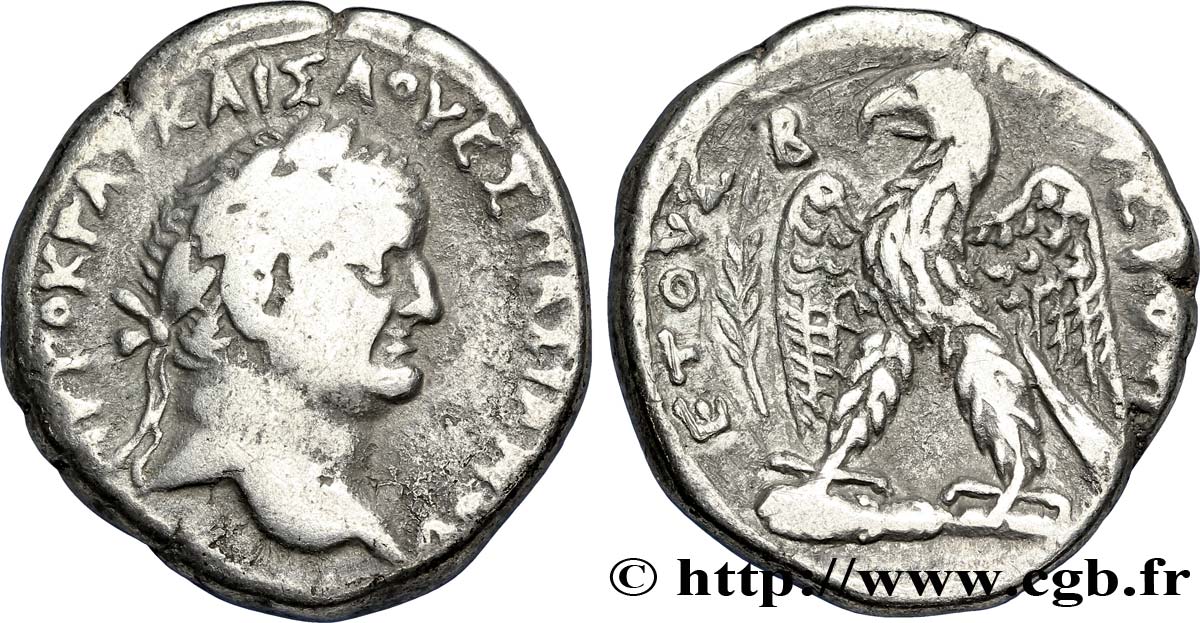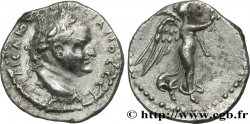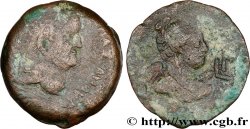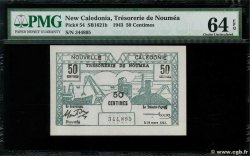E-auction 11-2579 - bpv_156720 - VESPASIANUS Tétradrachme syro-phénicien
Чтобы принять участие в торгах, вы должны войти в систему и стать подтвержденным участником аукциона. Войдите, чтобы сделать ставку. Ваш аккаунт будет подтвержден в течение 48 часов. Не ждите до закрытия торгов, чтобы зарегистрироваться.Сделав ставку на данный товар, вы вступаете в юридическое соглашение на покупку выбранного товара и нажатием кнопки «Сделать ставку» подтверждаете принятие вами условий интернет-аукционов cgb.fr.
Ставка может бить сделана только в полном эквиваленте евро. Торги закроются согласно времени, указанному в описании товара, все ставки, сделанные после закрытия торгов, учитываться не будут. Не следует откладывать предложение вашей ставки до последнего момента, так как система может не успеть обработать вашу заявку, и ваша ставка не будет принята. Более детальную информацию вы найдёте здесь: FAQ по интернет-аукционам.
БЕСПЛАТНО.
БЕСПЛАТНО.
| Оценить : | 115 € |
| Цена : | 72 € |
| Максимальная предлагаемая цена : | 81 € |
| Конец торгов : | 27 June 2013 15:42:30 |
| Участников : | 5 Участников |
Тип Tétradrachme syro-phénicien
Дата: an 2
Монетный двор / Город: Antioche, Syrie, Séleucie et Piérie
Металл: silver
Диаметр: 25,50 mm
Ориентация осей монеты: 1 h.
Вес: 14,48 g.
Редкость: R1
Комментарии о состоянии
Flan large et ovale. Usure importante. Belle patine grise
Ссылки в каталоге: :
Происхождение:
Cet exemplaire est le 0112_116 de la base TSP
Лицевая сторона
Аверс: описание: Tête laurée de Vespasien à droite (O*).
Аверс: легенда: AUTOKRAT KAISA OUESPASIANOU, (Autokratoros Kaisaros ouespasianou)
Аверс: перевод: (L’empereur césar Vespasien).
Обратная сторона
Реверс: Описание: Aigle debout à gauche sur une massue, les ailes déployées.
Реверс: легенда: ETOUS B IE[ROU] (Etous b Ierou)
Реверс: перевод: (Deuxième année sainte).
Комментарий
Les monnaies du troisième groupe des frappes de Vespasien, caractérisées par un aigle à gauche sur une massue, sans couronne dans le bec, sont du style d’Alexandrie mais de la datation syrienne avec la lettre annuelle surmontée d’une barre. Les quantités frappées suivent les besoins : les frappes les plus massives sont celles de l’An 2, fin de la Guerre juive et elles se terminent en l’An 5 avec des quantités frappées décroissantes au fil des années.
Plusieurs graveurs participent à cette série où celui de notre exemplaire est très bien représenté. On doit remarquer que les pièces des groupes dits au style d’Alexandrie ont une caractéristique commune : l’aigle ne tient pas de couronne (groupes 1, 2 et 3) dans le bec. Ceci renforce l’idée que cette couronne était une distinction attribuée à la ville émettrice et que nous aurions affaire à un atelier militaire ou plus simplement à un atelier - quelque soit sa localisation - fourni en métal par le Trésor Militaire, sans lien organique avec une ville.
Dans la base TSP maintenue par Michel Prieur, soixante dix-huit exemplaires sont maintenant répertoriés.
The coins of the third group of Vespasian's strikes, characterized by an eagle facing left on a club, without a crown in the beak, are of the Alexandrian style but of the Syrian dating with the annual letter surmounted by a bar. The quantities struck follow the needs: the most massive strikes are those of Year 2, end of the Jewish War and they end in Year 5 with decreasing quantities struck over the years. Several engravers participate in this series where that of our example is very well represented. It should be noted that the coins of the groups called Alexandrian style have a common characteristic: the eagle does not hold a crown (groups 1, 2 and 3) in the beak. This reinforces the idea that this crown was a distinction attributed to the issuing city and that we would be dealing with a military mint or more simply a mint - whatever its location - supplied with metal by the Military Treasury, without organic link with a city. In the TSP database maintained by Michel Prieur, seventy-eight examples are now listed.
Plusieurs graveurs participent à cette série où celui de notre exemplaire est très bien représenté. On doit remarquer que les pièces des groupes dits au style d’Alexandrie ont une caractéristique commune : l’aigle ne tient pas de couronne (groupes 1, 2 et 3) dans le bec. Ceci renforce l’idée que cette couronne était une distinction attribuée à la ville émettrice et que nous aurions affaire à un atelier militaire ou plus simplement à un atelier - quelque soit sa localisation - fourni en métal par le Trésor Militaire, sans lien organique avec une ville.
Dans la base TSP maintenue par Michel Prieur, soixante dix-huit exemplaires sont maintenant répertoriés.
The coins of the third group of Vespasian's strikes, characterized by an eagle facing left on a club, without a crown in the beak, are of the Alexandrian style but of the Syrian dating with the annual letter surmounted by a bar. The quantities struck follow the needs: the most massive strikes are those of Year 2, end of the Jewish War and they end in Year 5 with decreasing quantities struck over the years. Several engravers participate in this series where that of our example is very well represented. It should be noted that the coins of the groups called Alexandrian style have a common characteristic: the eagle does not hold a crown (groups 1, 2 and 3) in the beak. This reinforces the idea that this crown was a distinction attributed to the issuing city and that we would be dealing with a military mint or more simply a mint - whatever its location - supplied with metal by the Military Treasury, without organic link with a city. In the TSP database maintained by Michel Prieur, seventy-eight examples are now listed.








 Cообщить об ошибке
Cообщить об ошибке Распечатать страницу
Распечатать страницу Отправить мой выбор
Отправить мой выбор Задать вопрос
Задать вопрос Consign / sell
Consign / sell
 Информация
Информация















